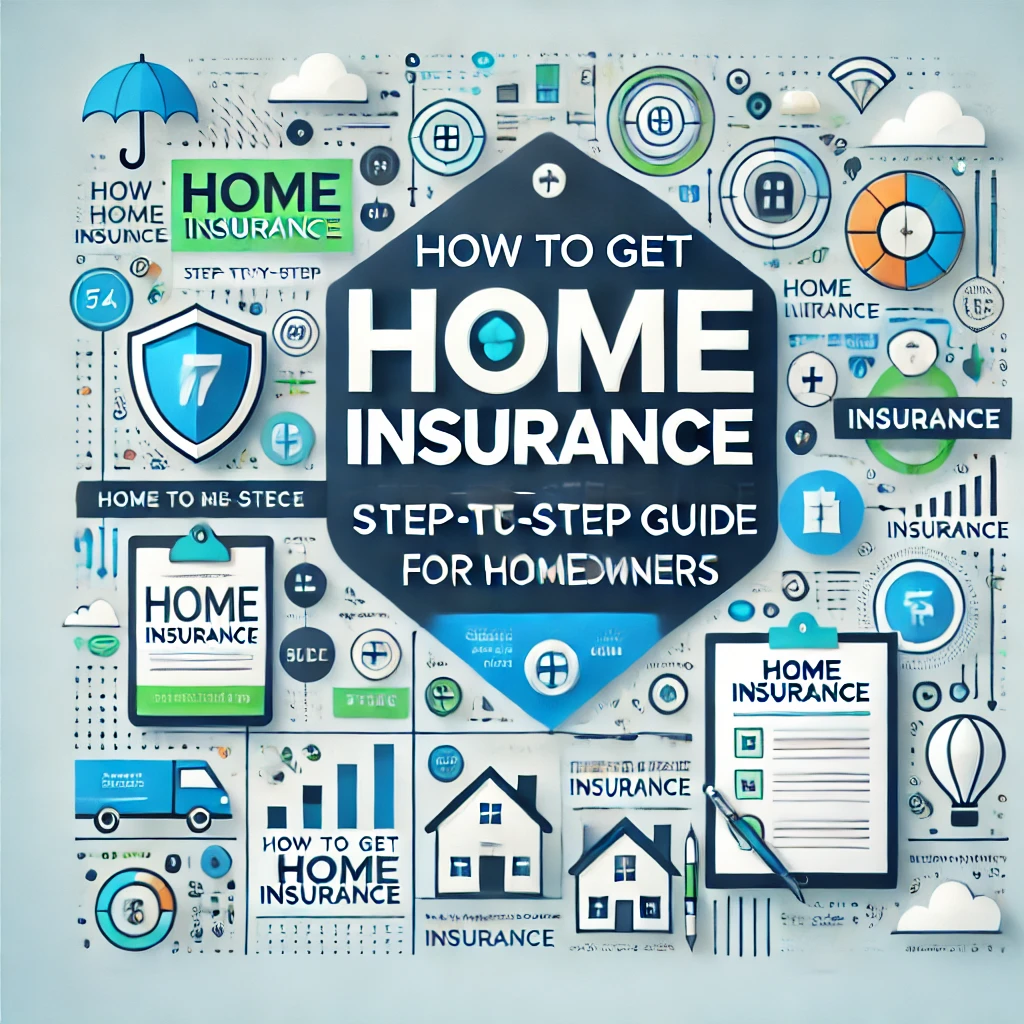
Introduction
Your home is one of your most valuable assets, and protecting it with home insurance is essential. Whether you own a house, condo, or rent an apartment, insurance can help cover damages, theft, and liability risks. But with so many options, choosing the right policy can feel overwhelming.
In this guide, we’ll cover:
✅ The different types of home insurance
✅ How to choose the best coverage
✅ Steps to buy home insurance
✅ Tips to save money on your policy
Let’s get started! 🏡✨
1. What is Home Insurance?
Home insurance (also called homeowners insurance) is a policy that protects your home and belongings from risks like fire, theft, vandalism, and natural disasters. It also provides liability coverage in case someone gets injured on your property.
If you have a mortgage, your lender will likely require you to have home insurance. Even if you fully own your home, it’s still a smart investment to protect against unexpected damages.
2. Types of Home Insurance
1. Homeowners Insurance (HO-3 Policy – Most Common)
Covers your house, personal belongings, and liability for injuries or damage to others.
2. Condo Insurance (HO-6 Policy)
Protects condo owners, covering personal property and liability but not the building structure (which is covered by the condo association’s policy).
3. Renters Insurance (HO-4 Policy)
Covers personal belongings and liability but not the physical building (landlord’s responsibility).
4. Landlord Insurance
For rental property owners, covering damages to the building and liability protection.
5. Mobile Home Insurance (HO-7 Policy)
Designed specifically for mobile or manufactured homes.
6. Flood and Earthquake Insurance (Separate Policies)
Standard home insurance does NOT cover floods or earthquakes. You need to buy separate policies for these risks.
3. How to Get Home Insurance (Step-by-Step Guide)
Step 1: Assess Your Insurance Needs
Before buying insurance, consider:
✅ The value of your home and belongings
✅ The location (Is it in a flood or earthquake-prone area?)
✅ Special valuables (Jewelry, antiques, electronics, etc.)
Knowing your needs will help you choose the right coverage.
Step 2: Compare Insurance Providers
Different companies offer different rates and coverage options. Some top home insurance providers in the USA include:
- State Farm
- Allstate
- Geico
- Progressive
- Farmers Insurance
- Liberty Mutual
Use online tools like Policygenius or The Zebra to compare quotes.
Step 3: Get Quotes from Multiple Companies
Request quotes from at least 3 to 5 insurance providers. You’ll need to provide:
- Home details (Size, age, construction type)
- Security features (Alarms, smoke detectors, etc.)
- Claims history (Past home insurance claims)
- Location (ZIP code affects rates)
Step 4: Check Coverage Limits and Deductibles
- Dwelling coverage: Pays for repairs or rebuilding if your home is damaged.
- Personal property coverage: Protects furniture, electronics, and valuables.
- Liability coverage: Covers legal expenses if someone sues you for injuries or damages.
- Deductible: The amount you pay out of pocket before insurance covers the rest.
A higher deductible lowers your premium but increases out-of-pocket costs if you file a claim.
Step 5: Review the Policy Details
Before purchasing, carefully read the policy to check:
✅ What’s covered and what’s excluded
✅ Policy limits for valuables like jewelry or electronics
✅ Additional coverage options (Flood, earthquake, etc.)
Step 6: Purchase Your Policy
Once you’re satisfied with the coverage, you can buy the policy online, over the phone, or through an insurance agent. After purchase, you’ll receive:
✅ Policy details (Coverage, limits, and conditions)
✅ Proof of insurance (Required by lenders if you have a mortgage)
4. How to Save Money on Home Insurance
💰 1. Increase Your Deductible – A higher deductible lowers your premium.
💰 2. Bundle Home & Auto Insurance – Many insurers offer discounts if you combine home and car insurance.
💰 3. Install Safety Features – Security alarms, smoke detectors, and storm-resistant windows can lower premiums.
💰 4. Improve Your Credit Score – A higher credit score often means lower insurance costs.
💰 5. Ask for Discounts – Insurers offer discounts for:
✅ No prior claims
✅ Being a senior citizen
✅ Loyalty (staying with the same insurer for years)
💰 6. Shop Around Regularly – Compare rates every year to find better deals.
5. Frequently Asked Questions (FAQs)
1. Is home insurance required by law?
No, but if you have a mortgage, your lender will require you to have home insurance.
2. How much does home insurance cost?
The cost depends on:
- Home value (More expensive homes cost more to insure)
- Location (Homes in high-risk areas have higher premiums)
- Security features (Alarms and reinforced doors can lower costs)
On average, home insurance costs $1,200 to $2,500 per year in the USA.
3. Does home insurance cover water damage?
It depends!
✅ Sudden water damage (Burst pipes, roof leaks) is usually covered.
❌ Flood damage is NOT covered (You need separate flood insurance).
4. Can I get home insurance with bad credit?
Yes, but your rates may be higher. Improving your credit score can help lower your premiums.
5. What happens if I don’t have home insurance?
❌ If your home gets damaged, you’ll pay out of pocket for repairs.
❌ If someone sues you for injuries on your property, you could face huge legal costs.
❌ If you have a mortgage, your lender may force you to buy expensive lender-placed insurance.
It’s always best to stay covered!
Conclusion
Getting home insurance is easy if you follow the right steps. By comparing providers, choosing the right coverage, and taking advantage of discounts, you can protect your home and belongings without overpaying.
If you’re a new homeowner or looking to switch insurers, use this guide to find the best home insurance for your needs! 🏡✨